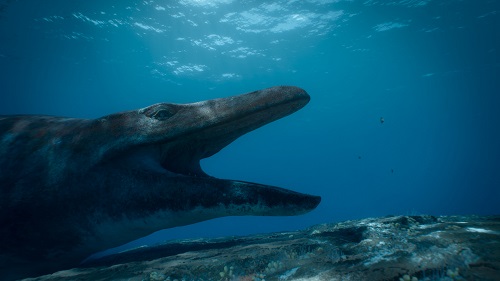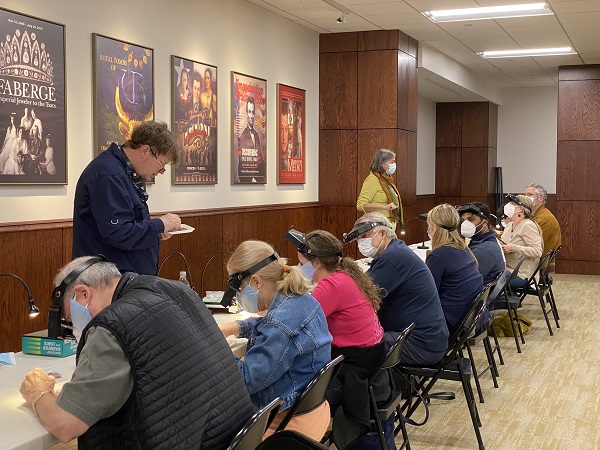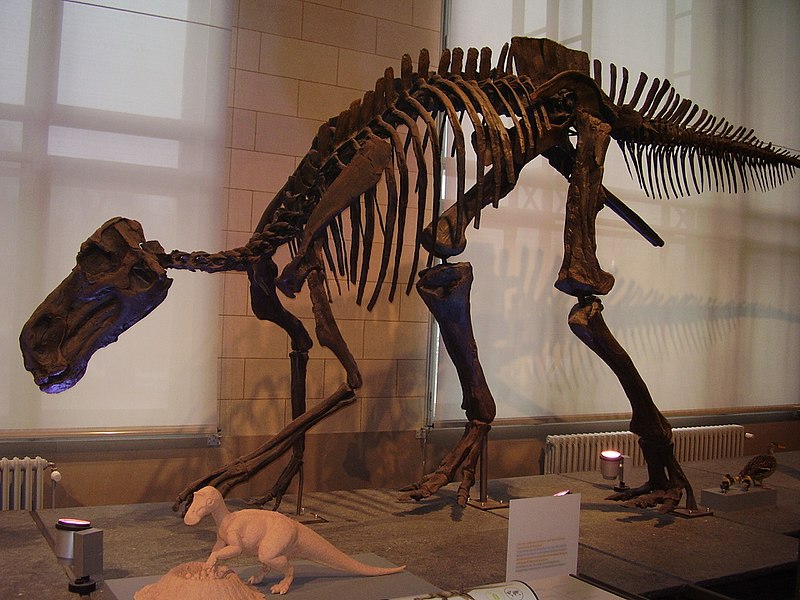Occasionally we receive artifacts at the Museum uncovered by curious residents who are looking to have their discoveries identified. The latest comes from 12-year-old Jersey Village resident Robby, who took it upon himself to write Associate Curator David Temple the following (quite impressive) letter:
Dear Sir or Madam,
My name is Robby, I am 12 years old, and I was walking along in my backyard, playing by myself, when I felt something painful and sharp stick into my foot, so naturally I stopped to investigate. I felt around for the article that wounded me, and I concluded that it was a bone. I unearthed it and further found that it was a bone that looked like it was a washer joint (the kind that the spinal cord travels through), and I washed it off carefully to see if there were any further marks that could tell me if it was a dinosaur bone, but there was nothing. I was hoping that you could either radiometric date it, or DNA test it to see if it was. I have enclosed the bone in an envelope. Please let me know as soon as you find out.
Sincerely,
Robby
P.S.
2 days later, I found another bone that looked almost identical to the bone I found previously. It is a little bigger, and dirtier. Please respond!
Temple looked over the bones and, upon concluding his research and determining their true origins, issued the following response on official Museum letterhead:
Dear Robby,
Thank you for your inquiry regarding the bones. When researching these things, particularly to which ancient animal a fossil bone may have belonged, a great place to begin would be a geologic map of the relevant area.
Geologic maps are peculiar; they are less about telling you how to get some place and more about telling where you are in time. The sediments that Jersey Village sits on are from the Quaternary within the Cenozoic; your backyard is outcropping the Beaumont Formation at the oldest, which gets you somewhere between 10,000 and 2 million years ago (give or take).
Pleistocene-aged animals lived on the sediments in your yard, and their remains could be buried in these sediments. No dinosaurs; however mammoths, mastodons and giant sloths all are animals that lived in the area during that time. I am enclosing a copy of the geologic map of Texas for your perusal. Find Houston and match the color on the key; where ever you find yourself, that’s where you are.
From careful analysis, we know your samples to come from an ungulate from the genus Bos. These pieces are not vertebra, but pieces from the legs of the animal. Though not old enough to be a paleontological sample, these do qualify for archaeological/anthropological analysis.
One thing I determined was that this animal was probably eaten by a sometime predatory species, likely Homo sapiens. I will say this conceding that the teeth and jaws of Homo sapiens are not adapted for chewing hard bones. You yourself noted the absence of marks on your sample bones, and I agree with your estimation and believe it significant.
Also, your samples do not bear any markings that would indicate primary feeding or secondary scavenging by Canis lupus familiaris, or Canis latrans. These animals are or were recently common in Jersey Village. Their teeth and jaws are well-adapted for crunching bone and leaving diagnostic traces of this feeding behavior.
Another bit of evidence pointing to primary consumption by a member of the genus Homo is that species’ nearly unique adaptation for making and using tools. Your sample bones show cultural modification, specifically butchering.
As mentioned above, the flat sides of the bones show them to have been modified with a saw, probably with the muscles attached. The smooth, even sides point to a mechanical, fine-toothed saw rather than a hand saw. Considering practices in local culture, this bone and attached muscle were likely placed over a fire, for a short period of time, as the bones do not appear to be charred.
In archaeology, the three things to remember are context, context, and context. Were these bones by themselves or were there other objects with them? Bits of metal or glass maybe? If those objects are associated with the bones that would strongly support the “BGM” hypothesis below. Also the age of your home is a potential clue.
Before trash pick-up was available, garbage was frequently burned in the backyard and buried. While more charring over all surfaces on your bone samples would help support this, the absence of charring does not rule out the “Buried Garbage Model.” It is possible that there was a burn ban, or the responsible party for trash disposal just did a really bad job. Sadly there are questions science cannot answer, at least not without more fieldwork. Your sample could still have been buried, which would have kept it from being chewed by dogs or coyotes.
To summarize, you do not have a dinosaur, sadly. You did find the remains of a barbeque, shank steaks were served, they were likely served rare, medium rare, medium well at most. The bones were then thrown outside and the people either had no dog, and/or buried their trash. Your samples are not good candidates for radiometric dating; what is associated with the bones would be your best way of dating your site, but I would guess near the Late Recent.
I encourage you to keep looking down; you never know what you’ll find. If there is old glass or metal where you found the bones, be careful not to cut yourself when examining these fragments.
If you would like to go fossil hunting, get your parents to look up the Houston Gem and Mineral Society. They take regular trips to outcrops to collect fossils. If you want to know where dinosaur fossils in Texas might be found, the enclosed map has the answer. Dinosaur fossils can also be found locally at the Houston Museum of Natural Science.
I am returning your samples as I am contemplating becoming a vegetarian, and they make me hungry.
Sincerely,
David Temple
Associate Curator of
Paleontology
Robby’s samples were returned to him this week along with the Museum’s encouragement to keep curious. Tune in to the Beyond Bones for future installments from The Department of Mysteries.








